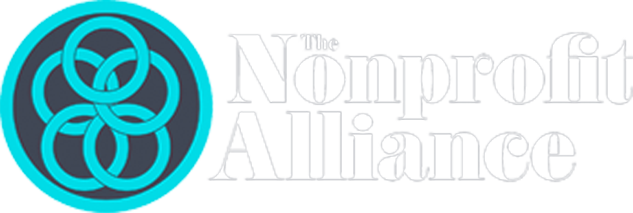Stakeholder Relationships: Take a Data Pause for Your Cause
Join Mary Beth McIntyre and The Nonprofit Alliance Foundation for Donors, Allies, Advocates, and Volunteers: Making Stakeholder Data Work for You, a 2-part workshop in March 2021, sponsored by ROI.
Any good relationship relies on listening more than talking. For this month, let’s take a pause and think about our constituent relationships. What are our constituents telling us about their passion for the cause? They are waving their arms in multiple ways, across multiple channels and engagements, telling you they believe in you, they are invested in you. Are you listening?
 Who has responsibility and authority to guide your organization’s “data and partner eco-system” on what data is important to remember for constituents? We can’t assume the data eco-system knows what to share and code across systems. Fundraisers in particular have insights and influence on what might be lifting response, retention, upgrades, and reactivation, and what might be variables for personalization that will resonate. Those of us with access to those insights need to take the lead on what data should be explored and built into the organization’s muscle memory. Even if it is not our comfort zone. It is easy to think it is someone else’s job, but this is a shared responsibility.
Who has responsibility and authority to guide your organization’s “data and partner eco-system” on what data is important to remember for constituents? We can’t assume the data eco-system knows what to share and code across systems. Fundraisers in particular have insights and influence on what might be lifting response, retention, upgrades, and reactivation, and what might be variables for personalization that will resonate. Those of us with access to those insights need to take the lead on what data should be explored and built into the organization’s muscle memory. Even if it is not our comfort zone. It is easy to think it is someone else’s job, but this is a shared responsibility.
This is where the pause is important. Once or twice a year, sit down with your colleagues— both internal and external partners—and take stock of what constituents are telling you.
- What have constituents told you about their relationship with the mission… was someone they know served? How have they engaged with you? How and when have they raised their hand to be involved? Have they responded to surveys?
- Is this information shared to the CRM, coded, and accessible across the data eco-system? Do you have a 360 degree view?
- What else? Read your comment mail. Talk to your gift officers, cagers, contact center, field staff, telemarketers, planned giving partners, external partners, agencies, modelers, volunteers… they likely have data on some of these variables.
- Do you have event participants who may not have given directly to that event but brought a team together? They may be giving in other ways, have you connected them to your CRM or reflected that additional engagement?
- Do you have large groups of engaged constituents who might not have given yet, are on disparate systems, excel spreadsheets, or in someone’s head? Can you connect these to your system? Are they also a donor? Does this give a fuller picture of their relationship to the organization and to the mission?
Are you collecting this information? Have you quantified it? If someone is a donor AND an advocate, ally, stakeholder, volunteer, subscriber, event participant, virtual event or program attendee, or multi-source or multi-year donor, they are more likely to become a sustainer, upgrade, or engage at a higher level. Do they have stronger KPI’s? Most importantly can you get at this data easily? Is there unified access to this data so all parts of the organization (and external partners) can recognize and steward those relationships in a coordinated fashion?
It may take time to put the pieces together, but it will be worth it.
This is what your pause for a cause can focus on. What are those data points for your organization or client? Who do you need to work with to quantify the value to make the case for streamlining, gathering more, or recognizing this extra commitment? In our experience, aggregating this type of mission-aligned data on behalf of your constituents can have exponential lifts in performance. Assuring accessibility to this additional relationship data can help transform your organization’s ability to steward relationships more successfully. The more you listen—and capture the data—the more you will have to talk about with donors related to your mission and their interests.
Last week the Agitator shared a post on testing… embedded in that article was a reminder that onboarding donors and collecting information at this early stage is critical to listening and learning about your donor’s relationship with the organization. The onboarding reference referred back to a post from 2017 by Nick Ellinger and Kevin Schulman on the importance of collecting interest data to round out a donor’s identity. This post then referred back to an article that referenced key donor data points from a 1996 Relationship Fundraising book by Ken Burnett. Yup, these concepts are not new. But, they are still valuable and prove stronger than other third party data. With all the channels and the ways donors engage it is harder to collect and organize this data to be actionable on behalf of a donor across channels and up the giving ladder. That is why taking a pause across all channels and partners can make a difference. Create an action plan that is right for your team.
Many times, these action plans are a marathon not a sprint and do require collaborative efforts across teams and often engage external partners. Your supporters, donor relationships, KPI’s, bottom line and even your modelers will thank you if you lift your voice and help direct the process of what is important in this pause. Take that pause and listen more.
NOTE: The Nonprofit Alliance is offering a two-part workshop in March, Donors, Allies, Advocates, and Volunteers: Making Stakeholder Data Work for You, facilitated by Mary Beth McIntyre. This workshop will guide you as you create that pause for your cause. Participants are encouraged to bring a plus-one. It takes a team to make change, so invite an internal or external partner to join you. Together, you’ll plan the next action steps to connect, access, quantify, or test a few of your relationship data points. There will also be an accountability check-in with a coach six-months after the workshop.




